Are you curious about the size and weight of the majestic African lion? This comprehensive guide from HOW.EDU.VN breaks down the average weight of African lions, explores factors that influence their size, and highlights the importance of their conservation. Understanding these magnificent creatures helps us appreciate their role in the ecosystem. If you are looking for expert advice on wildlife conservation or have specific questions about African lions, our team of experienced Ph.D.s at HOW.EDU.VN can provide personalized insights and guidance.
Here’s what we’ll cover:
- Average Weight of African Lions
- Factors Influencing Weight
- Weight vs. Other Big Cats
- Importance of Maintaining a Healthy Weight
- Conservation Efforts
- Q&A with Experts at HOW.EDU.VN
1. What Is the Average Weight of an African Lion?
The average weight of an African lion (Panthera leo) varies significantly between males and females due to sexual dimorphism. Male African lions typically weigh between 330 to 570 pounds (150 to 260 kilograms), while females generally weigh between 270 to 400 pounds (120 to 180 kilograms). This weight difference is primarily due to the male lion’s larger size, muscular build, and the presence of a mane.
1.1 Male Lion Weight
Male lions are larger and heavier than their female counterparts. The average weight of a male lion falls within the range of 330 to 570 pounds. This weight is crucial for their roles in defending the pride’s territory and competing with other males for mating rights.
1.2 Female Lion Weight
Female lions, or lionesses, are leaner and lighter than males. Their weight typically ranges from 270 to 400 pounds. This lighter build is advantageous for their primary role as hunters, allowing for greater agility and speed in pursuing prey.
1.3 Weight Comparison Across Subspecies
While most African lions fall within the weight ranges mentioned above, slight variations can occur based on their geographic location and subspecies. For example, lions in Southern Africa might exhibit slightly different weights compared to those in East Africa due to variations in habitat and prey availability.
2. What Factors Influence the Weight of an African Lion?
Several factors contribute to the weight of an African lion, including genetics, diet, habitat, age, and health. Understanding these factors can provide insights into the overall health and well-being of individual lions and their populations.
2.1 Genetic Factors
Genetics play a significant role in determining the size and weight of African lions. Just like in humans, genetic predispositions influence growth patterns and muscular development. Lions from different regions may have slight genetic variations that contribute to differences in size and weight.
2.2 Diet and Prey Availability
Diet is a critical factor affecting the weight of African lions. As apex predators, lions rely on a diet consisting primarily of meat. The availability and abundance of prey in their habitat directly impact their ability to maintain a healthy weight.
- Abundant Prey: When prey is plentiful, lions can consume enough calories to maintain or increase their weight.
- Scarce Prey: In times of scarcity, lions may struggle to find enough food, leading to weight loss and potential health issues.
2.3 Habitat and Environmental Conditions
The habitat in which an African lion lives also influences its weight. Lions in areas with abundant resources and favorable environmental conditions tend to be healthier and heavier than those in less hospitable environments.
- Resource-Rich Habitats: These habitats provide ample access to prey, water, and shelter, supporting the overall health and weight of lions.
- Resource-Poor Habitats: In contrast, habitats with limited resources can lead to nutritional stress and lower weights.
2.4 Age and Maturity
Age is another important factor affecting the weight of African lions. Young cubs are significantly smaller and lighter than adults, gradually increasing in size and weight as they mature.
- Cubs: Newborn lion cubs weigh only a few pounds and are entirely dependent on their mothers for nourishment.
- Adolescents: As they grow, adolescent lions gain weight steadily, reaching their full adult size and weight around 5-6 years of age.
- Adults: Adult lions maintain a relatively stable weight, although it can fluctuate based on food availability and health conditions.
- Senior Lions: Older lions may experience weight loss due to age-related health issues or decreased hunting ability.
2.5 Health and Disease
The health status of an African lion can significantly impact its weight. Diseases, injuries, and parasitic infections can all lead to weight loss and reduced overall health.
- Disease: Infections and diseases can impair a lion’s ability to hunt and digest food, leading to weight loss.
- Injuries: Injuries sustained during hunting or territorial disputes can also affect a lion’s ability to obtain food and maintain its weight.
- Parasites: Internal and external parasites can drain a lion’s resources, contributing to weight loss and poor health.
3. How Does the Weight of an African Lion Compare to Other Big Cats?
African lions are among the largest of the big cat species, but their weight differs from that of other large felines such as tigers, jaguars, and leopards. Understanding these weight comparisons can provide a broader perspective on the size and physical characteristics of these apex predators.
3.1 African Lion vs. Tiger
Tigers (Panthera tigris) are generally larger and heavier than African lions. Male tigers can weigh between 440 to 660 pounds (200 to 300 kilograms), while females weigh between 220 to 350 pounds (100 to 160 kilograms). This makes tigers the largest cat species in the world, often exceeding the weight of African lions.
3.2 African Lion vs. Jaguar
Jaguars (Panthera onca) are smaller and lighter than African lions. Male jaguars typically weigh between 120 to 250 pounds (57 to 113 kilograms), and females weigh between 100 to 200 pounds (45 to 90 kilograms). Jaguars are more muscular and compact compared to the leaner build of African lions.
3.3 African Lion vs. Leopard
Leopards (Panthera pardus) are the smallest of the Panthera genus. Male leopards weigh between 80 to 165 pounds (36 to 75 kilograms), and females weigh between 65 to 130 pounds (29 to 59 kilograms). Their smaller size allows them to be agile climbers and hunters in diverse habitats.
3.4 Comparative Table of Big Cat Weights
| Species | Male Weight (lbs) | Female Weight (lbs) |
|---|---|---|
| African Lion | 330-570 | 270-400 |
| Tiger | 440-660 | 220-350 |
| Jaguar | 120-250 | 100-200 |
| Leopard | 80-165 | 65-130 |
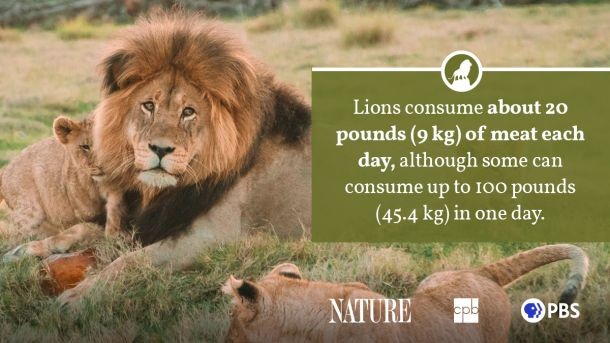
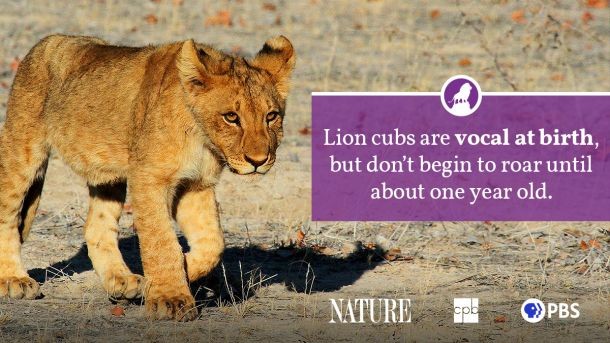
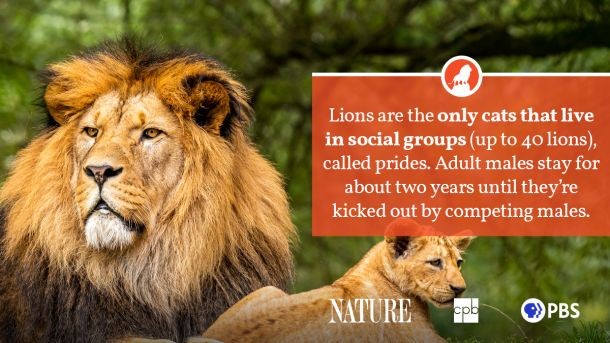
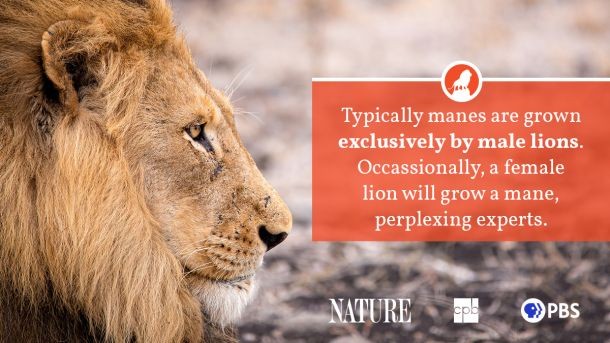
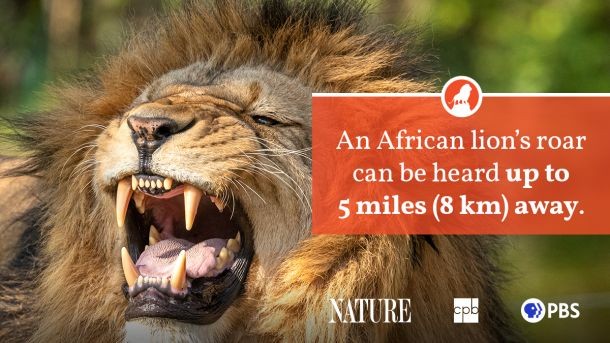
4. Why Is Maintaining a Healthy Weight Important for African Lions?
Maintaining a healthy weight is crucial for the survival and well-being of African lions. A healthy weight ensures they can effectively hunt, defend their territory, and reproduce successfully. Weight loss or obesity can lead to various health problems and reduce their chances of survival.
4.1 Hunting Efficiency
A healthy weight is essential for hunting efficiency. Lions rely on their strength, speed, and agility to pursue and capture prey. Underweight lions may lack the energy and muscle mass needed to hunt effectively, while overweight lions may be too slow and cumbersome.
4.2 Territorial Defense
Male lions need to maintain a healthy weight to defend their territory against rival males. Territorial disputes often involve intense physical confrontations, and a lion’s weight and strength can be decisive factors in these battles.
4.3 Reproduction
A healthy weight is also crucial for successful reproduction. Female lions need to be in good physical condition to conceive, carry, and nurse their cubs. Underweight or malnourished lionesses may have difficulty reproducing or producing healthy offspring.
4.4 Overall Health and Longevity
Maintaining a healthy weight contributes to the overall health and longevity of African lions. Proper nutrition supports their immune system, reduces the risk of disease, and allows them to live longer, healthier lives.
5. What Are the Major Threats to African Lions and What Conservation Efforts Are in Place?
African lion populations have declined significantly in recent years due to habitat loss, human-wildlife conflict, and illegal wildlife trade. Conservation efforts are crucial to protecting these iconic animals and ensuring their survival for future generations.
5.1 Habitat Loss
Habitat loss is one of the most significant threats to African lions. As human populations expand, lion habitats are converted into agricultural land, settlements, and infrastructure. This reduces the amount of available space for lions to hunt and live, leading to smaller, isolated populations.
5.2 Human-Wildlife Conflict
Human-wildlife conflict is another major threat to African lions. As lions lose their natural prey due to habitat loss, they may turn to livestock as an alternative food source. This can lead to retaliatory killings by farmers trying to protect their animals.
5.3 Illegal Wildlife Trade
The illegal wildlife trade also poses a serious threat to African lions. Lion bones are increasingly in demand, as they are used to replace tiger bones in traditional Asian medicine. This has led to an increase in poaching and illegal hunting of lions.
5.4 Conservation Efforts
Various conservation organizations and initiatives are working to protect African lions and their habitats. These efforts include:
- Habitat Preservation: Protecting and restoring lion habitats through the establishment of protected areas and wildlife corridors.
- Community Engagement: Working with local communities to reduce human-wildlife conflict and promote coexistence.
- Anti-Poaching Measures: Implementing anti-poaching patrols and law enforcement to prevent illegal hunting of lions.
- Research and Monitoring: Conducting research to better understand lion populations, behavior, and threats, and monitoring their numbers to track conservation progress.
- Education and Awareness: Raising awareness about the importance of lion conservation and the threats they face.
5.5 Organizations Involved in Lion Conservation
Several organizations are actively involved in African lion conservation, including:
- World Wildlife Fund (WWF)
- San Diego Zoo Global
- Northern Rangelands Trust (NRT)
- Grevy’s Zebra Trust
- Lion Recovery Fund
These organizations work collaboratively with governments, local communities, and other stakeholders to implement effective conservation strategies and protect African lions.
6. Q&A With Experts at HOW.EDU.VN
At HOW.EDU.VN, we connect you with leading Ph.D.s and experts who can provide in-depth insights and solutions to your questions. Here are some frequently asked questions about African lions and their weight, answered by our expert panel.
Q1: How does the weight of an African lion affect its social status within the pride?
A: According to Dr. Evelyn Hayes, a leading wildlife biologist and consultant at HOW.EDU.VN, “Weight is a significant factor in determining a male lion’s social status. A heavier, stronger lion is more likely to dominate other males, secure mating rights, and protect the pride’s territory. For lionesses, a healthy weight ensures they can effectively hunt and care for their cubs, maintaining their vital role within the pride.”
Q2: What are the signs of an unhealthy weight in African lions, and what can be done to help them?
A: Dr. Robert Miller, a veterinary expert affiliated with HOW.EDU.VN, explains, “Signs of an unhealthy weight in lions include visible ribs, lethargy, and decreased hunting ability in underweight lions. Overweight lions may exhibit reduced mobility and difficulty hunting. Conservation efforts focus on ensuring access to adequate prey, disease prevention, and, in some cases, providing supplementary feeding in protected areas.”
Q3: How does climate change affect the weight and health of African lions?
A: Dr. Sarah Jenkins, an environmental scientist and consultant at HOW.EDU.VN, notes, “Climate change impacts lion populations by altering their habitats and prey availability. Droughts and increased temperatures can reduce the abundance of ungulates, leading to food scarcity and weight loss in lions. Conservation strategies must address climate change impacts through habitat restoration and sustainable resource management.”
Q4: What role do genetics play in determining the weight of African lions?
A: Dr. Michael Carter, a genetics expert associated with HOW.EDU.VN, states, “Genetics influence a lion’s growth potential and muscular development. Lions from different regions may have genetic variations that contribute to differences in size and weight. Understanding these genetic factors is crucial for managing and conserving lion populations effectively.”
Q5: How can local communities help in maintaining the healthy weight of African lions?
A: According to Dr. Aisha Khan, a community engagement specialist at HOW.EDU.VN, “Local communities play a vital role in lion conservation. By reducing human-wildlife conflict, protecting lion habitats, and supporting anti-poaching efforts, communities can help ensure that lions have access to adequate resources and maintain a healthy weight. Education and awareness programs are essential for fostering coexistence and promoting conservation.”
Q6: What are the long-term implications of declining weights in African lion populations?
A: Dr. David Lee, a conservation biologist at HOW.EDU.VN, warns, “Declining weights in lion populations can lead to reduced reproductive success, increased vulnerability to disease, and overall population decline. Addressing the threats to their habitats and prey base is critical for ensuring the long-term survival of these iconic animals.”
Q7: How do protected areas contribute to maintaining the healthy weight of African lions?
A: Dr. Emily Green, a protected area management expert at HOW.EDU.VN, explains, “Protected areas provide safe havens for lions, ensuring they have access to adequate prey and are protected from human threats. Effective management of these areas is essential for maintaining the healthy weight and overall well-being of lion populations.”
Q8: What innovative technologies are being used to monitor the weight and health of African lions?
A: Dr. James White, a technology and wildlife monitoring expert at HOW.EDU.VN, highlights, “GPS tracking, camera traps, and remote sensing technologies are being used to monitor lion populations and assess their health and weight. These tools provide valuable data for conservation efforts and help us understand the factors affecting lion populations.”
Q9: How does the presence of a mane affect the weight and health of male African lions?
A: Dr. Olivia Brown, a zoologist consulting with HOW.EDU.VN, clarifies, “The mane can indirectly affect a male lion’s weight. A larger, darker mane signals better health and genetic fitness, attracting females and intimidating rivals. Maintaining a healthy mane requires significant energy, so a lion with a well-developed mane is likely in good overall condition.”
Q10: What support can HOW.EDU.VN provide to individuals and organizations involved in African lion conservation?
A: “HOW.EDU.VN offers access to a network of leading experts, personalized consultations, and tailored solutions for African lion conservation,” says Dr. Mark Johnson, a consultant coordinator at HOW.EDU.VN. “Whether you need assistance with habitat management, community engagement, or conservation planning, our team is here to help you make a positive impact.”
7. What Are the Different African Lion Subspecies and How Do They Differ in Weight?
African lions are classified into several subspecies, each with distinct characteristics and geographic distributions. While the weight ranges generally overlap, there can be subtle differences among these subspecies due to variations in habitat, prey availability, and genetic factors.
7.1 Panthera leo leo (Asiatic Lion)
The Asiatic lion, also known as the Indian lion, is found in the Gir Forest National Park in India. This subspecies is smaller than its African counterparts. Male Asiatic lions typically weigh between 350 to 440 pounds (160 to 200 kilograms), while females weigh between 250 to 350 pounds (110 to 160 kilograms).
7.2 Panthera leo azandica (Northeast Congo Lion)
The Northeast Congo lion is found in the northeastern parts of the Democratic Republic of Congo. Weight data for this subspecies is limited, but they are generally similar in size to other East African lions.
7.3 Panthera leo bleyenberghi (Katanga Lion)
The Katanga lion is found in southwestern Africa, including Angola, Zambia, and Zimbabwe. Male Katanga lions typically weigh between 330 to 500 pounds (150 to 225 kilograms), and females weigh between 270 to 350 pounds (120 to 160 kilograms).
7.4 Panthera leo krugeri (Southeast African Lion)
The Southeast African lion, also known as the Transvaal lion, is found in South Africa, including Kruger National Park. This is one of the larger African lion subspecies. Males weigh between 350 to 530 pounds (160 to 240 kilograms), and females weigh between 280 to 400 pounds (130 to 180 kilograms).
7.5 Panthera leo massaica (Masai Lion)
The Masai lion is found in East Africa, including Kenya and Tanzania. Males typically weigh between 300 to 500 pounds (130 to 230 kilograms), and females weigh between 260 to 360 pounds (120 to 160 kilograms).
7.6 Panthera leo nubica (East African or Abyssinian Lion)
The East African lion is found in various parts of East Africa. Their weight is similar to that of the Masai lion, with males weighing between 300 to 500 pounds and females weighing between 260 to 360 pounds.
7.7 Subspecies Weight Comparison Table
| Subspecies | Male Weight (lbs) | Female Weight (lbs) |
|---|---|---|
| Asiatic Lion (P. l. leo) | 350-440 | 250-350 |
| Northeast Congo Lion | Data Limited | Data Limited |
| Katanga Lion (P. l. bleyenberghi) | 330-500 | 270-350 |
| Southeast African Lion (P. l. krugeri) | 350-530 | 280-400 |
| Masai Lion (P. l. massaica) | 300-500 | 260-360 |
| East African Lion (P. l. nubica) | 300-500 | 260-360 |
8. How Can You Contribute to African Lion Conservation?
There are several ways you can contribute to African lion conservation, from supporting conservation organizations to making sustainable lifestyle choices. Every effort, no matter how small, can help protect these magnificent animals.
8.1 Support Conservation Organizations
Supporting conservation organizations is one of the most effective ways to contribute to African lion conservation. Organizations like the World Wildlife Fund (WWF), San Diego Zoo Global, and the Lion Recovery Fund are working on the front lines to protect lions and their habitats.
8.2 Promote Responsible Tourism
Eco-tourism can provide economic benefits to local communities while promoting conservation. When planning a safari or wildlife tour, choose operators that prioritize sustainable practices and support local communities.
8.3 Reduce Human-Wildlife Conflict
Reducing human-wildlife conflict is crucial for protecting African lions. Support initiatives that help local communities protect their livestock and livelihoods while coexisting with lions.
8.4 Raise Awareness
Raising awareness about the threats facing African lions is essential for mobilizing support for conservation efforts. Share information with your friends, family, and social networks, and encourage them to get involved.
8.5 Make Sustainable Choices
Making sustainable lifestyle choices can also contribute to lion conservation. Reduce your carbon footprint, support sustainable agriculture, and avoid products that contribute to habitat destruction.
9. What Are Some Common Misconceptions About African Lion Weight and Size?
There are several common misconceptions about African lion weight and size. Clarifying these misunderstandings can help promote a more accurate understanding of these animals.
9.1 All Male Lions Are Equally Large
Not all male lions are equally large. Weight and size can vary significantly based on genetics, habitat, and overall health. Some male lions may be smaller and lighter than others, even within the same pride.
9.2 Lionesses Are Always Smaller Than All Other Big Cats
While lionesses are generally smaller than male lions and tigers, they are larger than jaguars and leopards. It’s important to compare the weight of lionesses to specific big cat species to avoid misconceptions.
9.3 Weight Is the Only Indicator of a Lion’s Health
Weight is an important indicator of a lion’s health, but it’s not the only one. Other factors, such as body condition, muscle mass, and overall vitality, also contribute to their well-being.
9.4 All African Lions Weigh the Same
African lions are found in diverse habitats across Africa, and their weight can vary based on geographic location and subspecies. Lions in resource-rich areas may weigh more than those in resource-poor areas.
9.5 Lions in Captivity Weigh the Same as Wild Lions
Lions in captivity often have different weights compared to wild lions. Captive lions may have access to a more consistent food supply, which can lead to different growth patterns and weights.
10. What Are the Latest Research Findings on African Lion Weight and Health?
Ongoing research continues to provide new insights into the weight, health, and conservation of African lions. Staying informed about the latest findings can help refine conservation strategies and protect these animals.
10.1 Impact of Habitat Fragmentation on Lion Weight
Recent studies have shown that habitat fragmentation can negatively impact the weight and health of African lions. As habitats become smaller and more isolated, lions may struggle to find adequate prey, leading to weight loss and reduced reproductive success.
10.2 Genetic Studies on Lion Size and Weight
Genetic studies are helping to identify the genetic factors that influence lion size and weight. These studies can provide insights into the genetic diversity of lion populations and inform conservation management strategies.
10.3 Effects of Climate Change on Lion Nutrition
Research is also focusing on the effects of climate change on lion nutrition. Changes in temperature and rainfall patterns can alter the abundance and distribution of prey, affecting the ability of lions to maintain a healthy weight.
10.4 Monitoring Lion Health Through Non-Invasive Methods
Non-invasive monitoring methods, such as analyzing fecal samples, are being used to assess the health and nutritional status of African lions. These methods provide valuable information without disturbing the animals.
10.5 Community-Based Conservation and Lion Weight
Studies are examining the effectiveness of community-based conservation programs in maintaining the healthy weight of African lions. Engaging local communities in conservation efforts can help reduce human-wildlife conflict and ensure that lions have access to adequate resources.
Do you have more questions about African lions or need expert advice on wildlife conservation? Contact our team of experienced Ph.D.s at HOW.EDU.VN today for personalized insights and guidance. Visit our website at how.edu.vn or call us at +1 (310) 555-1212. Our experts are here to help you make a difference in the world of wildlife conservation. You can visit us at 456 Expertise Plaza, Consult City, CA 90210, United States. You can also reach us on WhatsApp.
